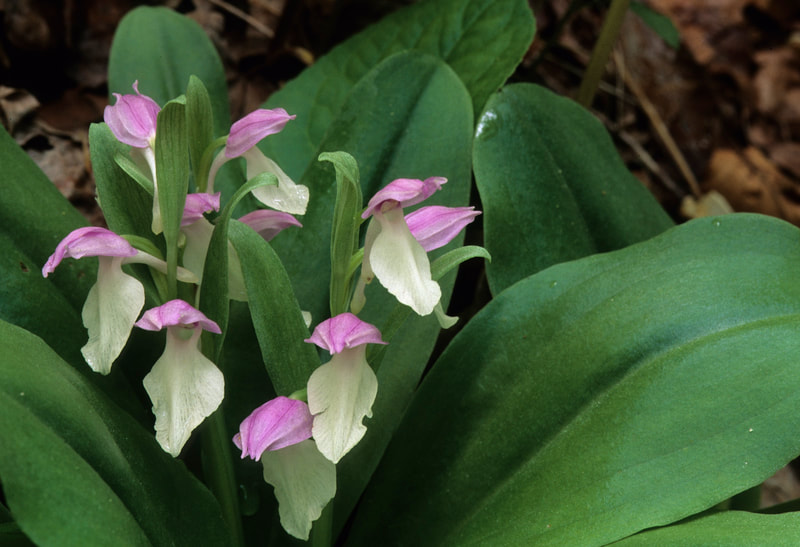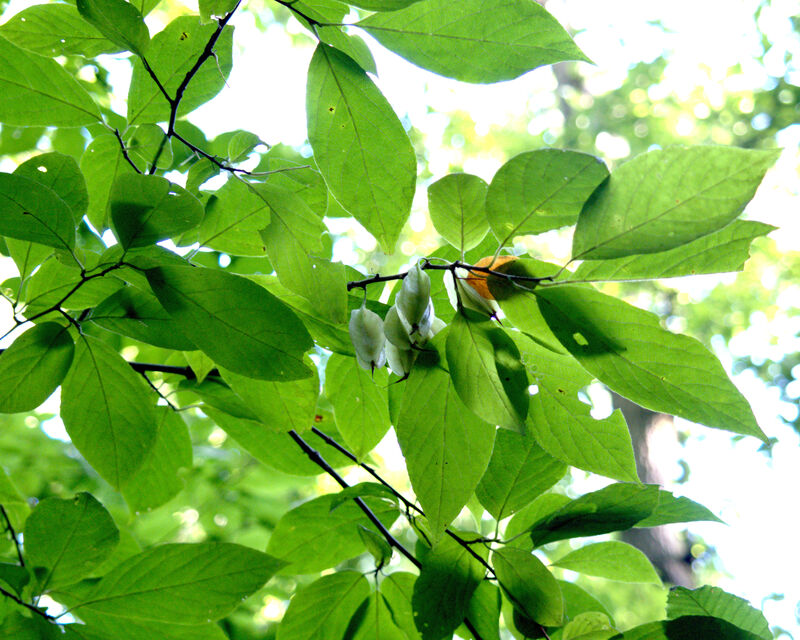Plant Adaptations in Deciduous Forests
|
|
Forests are communities where trees form a closed canopy, so only low levels of sunlight can enter when the trees are leafed out. Deciduous forests are those where trees drop their leaves each year in the autumn because when temperatures drop, the water within the leaves' cells freezes, breaking the cell walls.
These forests share the planet with desert, boreal forest, tropical forest, grassland, scrub, and tundra biomes. Often taken for granted, temperate deciduous forests are uncommon on a global scale, and should be prized and protected. . |
"One of the most conspicuous and stunningly beautiful seasonal phenomena in the north temperate zone is the flowering and leafing out of the northern forest. Both the flowering and the leafing out determine the insect populations, which in turn make the summer world possible for the majority of the birds and most mammals." Heinrich, Bernd. Summer World (p. 14). HarperCollins e-books. Kindle Edition.
Adaptations and Strategies for Living in the Deciduous Forest
Vegetation is adapted to the deep shade of the summer, and the colder, but sunnier conditions of winter. The rich bounty of leaf litter that is rained onto the forest floor each autumn also plays an important role.
Vegetation is adapted to the deep shade of the summer, and the colder, but sunnier conditions of winter. The rich bounty of leaf litter that is rained onto the forest floor each autumn also plays an important role.
|
|
Spring flowering. In forests many plants bloom in the spring before the canopy trees are fully leafed out, because they can capture more sun energy.They use this additional energy to flower and begin to form their seeds. “Spring ephemerals” flower and set seed by early summer; their leaves disappear by mid-summer.
Vines. Vining is an effective way to reach the sunlight in the canopy without investing a lot of energy in creating a large trunk. The berries of many vines are eaten by birds; the flowers provide nectar and pollen for insects. Large leaves, usually fanned out, in shady areas. Large, fanned out leaves can capture more sunlight, which is at a premium in the lower levels of the forest. Leaves are large in low forest layers and much smaller in the high canopy. Multi-directional branch layers in subcanopy trees. Branches grow in many layers and point in different directions to capture sunlight as it comes through at different angles during different times of day and year. Suppressed growth: “Suppressed growth” refers to trees that live as saplings in the understory for years, even decades. These small trees are “released” when a large limb or entire tree that was casting shade upon them dies, leaving a gap in the canopy. The trees shoot up quickly in the gap. Straight, unbranched trunks on the canopy trees: once a gap opens above an understory tree, the tree puts all of its energy towards growing into the canopy above it, not to growing side branches in the shady understory, so trees tend to be tall and straight. Parasitism is also an effective way to live in shady conditions: rather than photosynthesize, a few plants form connections to other plants and/or fungi in the soil, and draw in the nutrients they need. |















